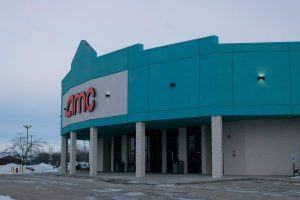Damaged museum to reopen
December 5, 2002
An empty shell of what it once was, the Anthropology Museum at NIU waits to be reopened.
Flooding damaged the museum this summer, but it may open again to the public sometime next semester.
Leaks from the heating and cooling system caused mildew problems in the carpets and deteriorated some plywood walls.
Four new heating units and new carpets need to be installed, and walls need to be repainted. A team of workers replaced asbestos insulation this summer.
Ann Wright-Parsons, the museum’s director, said she hopes the rest of the repairs to the museum will be made soon.
“It’s been sad and depressing to see the museum in such disrepair,” she said.
The 2500-square-foot museum, which is housed in the Stevens Building, contains several exhibits, including a children’s section called “Small Wonders” and a section on early humans called “The Neanderthal Question.”
Neither the Anthropology Department nor the university planned for the expense of making repairs to the museum, Wright-Parsons said.
Wright-Parsons said she is not sure of the total budget of the repairs, but she estimates it to cost $20,000.
The DeKalb County Community Foundation gave $4,000 to the museum to help with some of the costs. The university is supplying money also, especially from NIU’s building maintenance budget.
Winifred Creamer, executive director of the Anthropology Museum, said getting funding this year proved to be hard because of budget cuts. The museum is attempting to get grants to help with the budget crunch.
“The timing of the damages is unfortunate,” she said. “NIU has started a certificate program in museum studies, but the students can’t get the hands-on experience they need because the museum is closed.”
Michael Saari, associate director of the physical plant, said he is not sure when the museum would be operational. The first part of the repairs should start today, he said.
“A lot of how fast we get the work done depends on funding,” he said. “If we get enough money, the work could be done by late February.”
The first section to be renovated is the “Small Wonders” exhibit, he said.
Established in 1965, the Anthropology Museum owns more than 110,000 artifacts, almost all of them in storage. Although none of the artifacts in the museum were damaged by flooding, many have been moved to storage rooms in Cole Hall where temperature and humidity can be controlled.
“Our physical anthropology collection, which includes casts and models of primates and early humans, is one of the best in the United States,” Wright-Parsons said.
When open, the museum generally receives about 100 visitors a month. Many school groups visit the museum as part of educational field trips.






